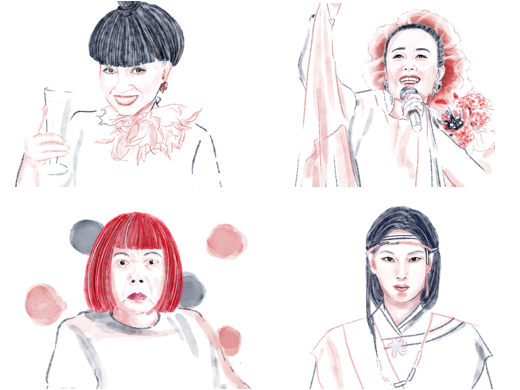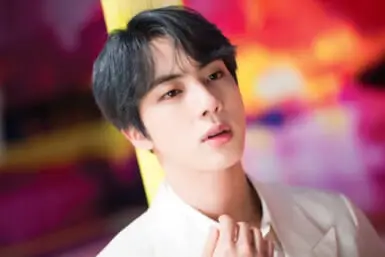Two years ago, TW conducted a survey asking 500 Tokyo residents who they would vote for as Japan’s greatest-ever person. As the top 25 were dominated by men, we decided to ask the same number of people about the country’s greatest-ever women. Here’s a look at the results.
25. EMPRESS MASAKO
Harvard graduate Masako Owada met Naruhito, the then Crown Prince of Japan at a banquet in 1986. Smitten, he pursued her for six years. Not wanting to give up her promising career as a diplomat, Owada twice turned down his marriage proposals before eventually saying yes in 1992. For years she avoided public appearances due to a stress-induced “adjustment disorder.” In May, she became the Empress.
24. RAICHO HIRATSUKA
Political activist Raicho Hiratsuka was one of the founders of Seito (Bluestocking), Japan’s first all-women literary magazine. “In the beginning, woman was the sun,” she wrote. “An authentic person. Now she’s the moon, a wan and sickly moon, dependent on another, reflecting another’s brilliance.” Hiratsuka established the New Women’s Association with Fusae Ichikawa, which led to the repeal of Article 5, a law banning women from participating in politics.
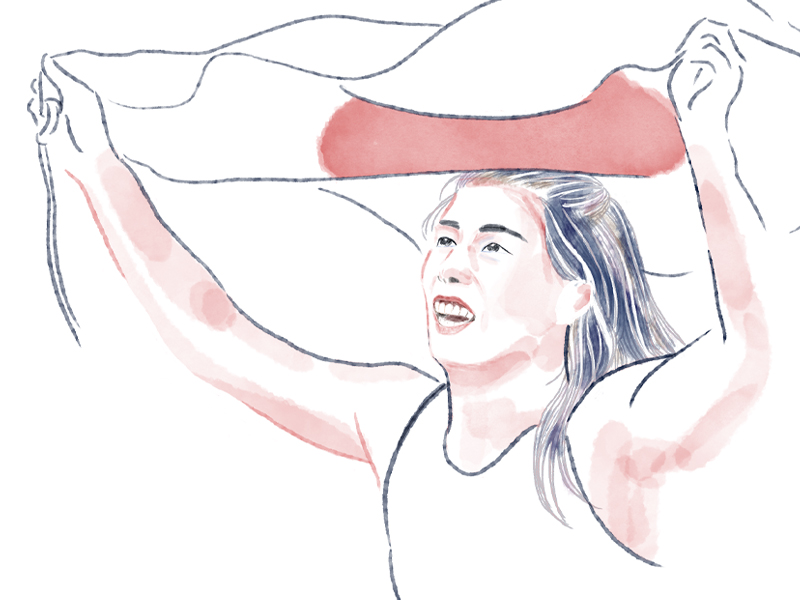
Saori Yoshida
23. SAORI YOSHIDA
“I strongly feel I’ve done everything I could do,” said Saori Yoshida at a press conference this year to announce her retirement from wrestling. Competing in the 53kg and 55kg divisions, she won 13 consecutive world titles, four Asian Games, and three Olympic gold medals. She is Japan’s second most decorated female Olympian behind wrestler Kaori Icho who has four golds.
22. MASAKO HOJO
Wife of Minamoto no Yoritomo, the first shogun of the Kamakura period, Masako Hojo has been described as the “most important woman in Japanese military history.” She rode alongside her husband on most of his campaigns and was only absent when giving birth to their children. Following his death, she shaved her head and became a Buddhist nun, though still continued her career as a politician.
21. SAYURI YOSHINAGA
Winner of a record four Japan Academy Best Actress awards, Sayuri Yoshinaga’s breakthrough role was in Kirio Urayama’s 1962 film, Foundry Town, which was nominated for the Palme d’Or at the Cannes Film Festival. Since playing the title character in Yumechiyo’s Diary, a 1984 TV drama (and later movie) about a geisha exposed to atomic radiation while in her mother’s womb, Yoshinaga has worked for the anti-nuclear movement.
20. TSUDA UMEKO
In 1871, six-year-old Tsuda Umeko was the youngest of five women selected for the Iwakura Mission, a diplomatic voyage with the aim of surveying Western civilization. In 1900 she founded Joshi Eigaku Juku (now Tsuda University), one of the oldest and most prestigious higher educational institutions for women in Japan. From 2024, she will be the face of the ¥5,000 bill.
19. FUSAE ICHIKAWA
A central figure in the struggle for women’s rights in Japan, Fusae Ichikawa co-founded the New Women’s Association with Raicho Hiratsuka and established Japan’s first women’s suffrage movement alongside Shigeri Yamataka. They lobbied for the inclusion of females in the 1925 General Election Law and as a result women got the vote at the end of WWII.
18. LADY KASUGA
Hailing from a prominent samurai family of the Azuchi-Momoyama and Edo periods, Lady Kasuga (Kasuga no Tsubone) was the wet nurse of the third Tokugawa shogun Iemitsu and exerted great influence within his court. When the Ooku (women’s quarter of the castle) was established in 1607 she achieved the rank of otoshiyori (senior ladyship). The Kasuga neighborhood of Bunkyo in Tokyo was named in her honor.
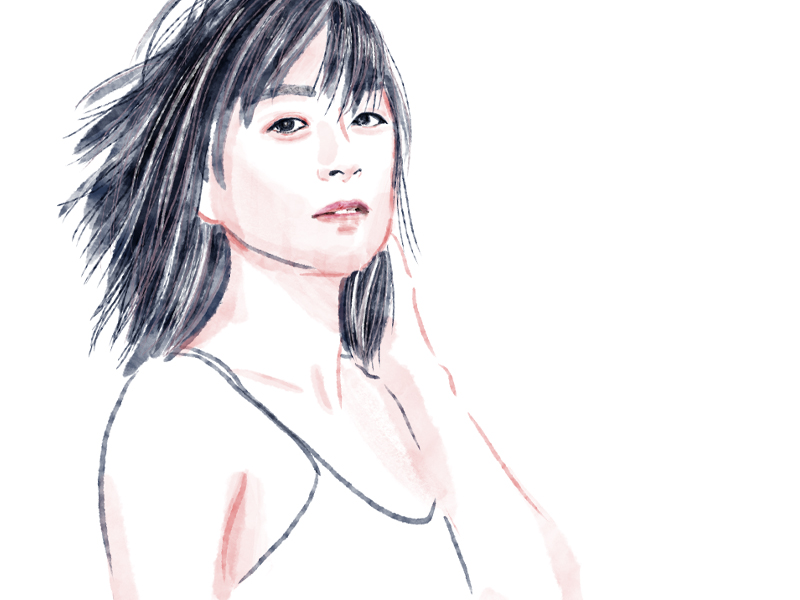
Hikaru Utada
17. HIKARU UTADA
Born and raised in New York, Hikaru Utada released her maiden Japanese-language LP, First Love, in 1999. It remains the country’s best-selling album of all time. Her two follow-up albums, Distance and Deep River, are also in the top 10. Utada’s parents, music producer Teruzane Utada and enka singer Keiko Fuji, married and divorced each other seven times. Fuji tragically took her own life in 2013.
16. JAKUCHO SETOUCHI
After an affair with her husband’s student, Jakucho Setouchi lost custody of her daughter and then started writing novels. Literary prizes followed; however, she was labeled a pornographer by the predominantly male Japanese literati. A Buddhist nun since 1973, she distributed medicine in Iraq during the Gulf War and staged a hunger strike to protest the reopening of Japan’s nuclear facilities. Her vernacular translation of The Tale of Genji was a bestseller.
15. HOMARE SAWA
A footballing legend, Homare Sawa made her top-flight debut aged 12. At 15, she played her first game for Japan, scoring four goals. Her crowning moment came in the 2011 World Cup final against America when she volleyed home to make it 2-2 in extra time. Japan won on penalties and Sawa was named FIFA Women’s World Player of the Year.
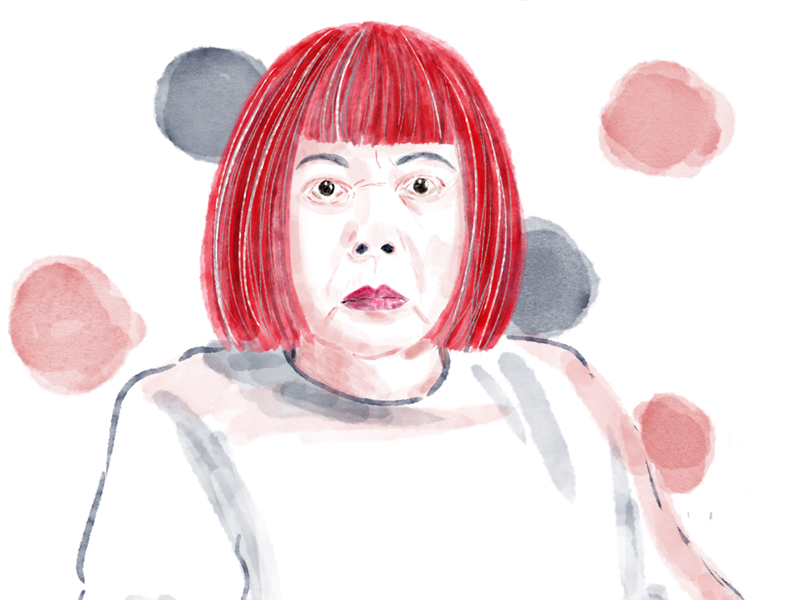
Yayoi Kusama
14. YAYOI KUSAMA
The world’s top-selling living female artist, Yayoi Kusama has spent four decades living voluntarily in a psychiatric hospital. During a traumatic childhood, her abusive mother sent her to spy on her father’s extramarital affairs. The polka-dot queen dealt with hallucinations by drawing repetitive patterns. She accused her friend Andy Warhol of plagiarism and once wrote an open letter to President Nixon offering to have sex with him if he would stop the Vietnam War.
13. CHIAKI MUKAI
In 1983, the same year she was named Chief Resident in Cardiovascular Surgery at Keio University Hospital, Chiaki Mukai read a newspaper article seeking Japanese scientists to conduct space experiments aboard the 1988 U.S. Space Shuttle. She applied and was selected as a back-up member. In 1994, she joined the crew of the Columbia, becoming the first Japanese woman to fly into space. Her second voyage came four years later.
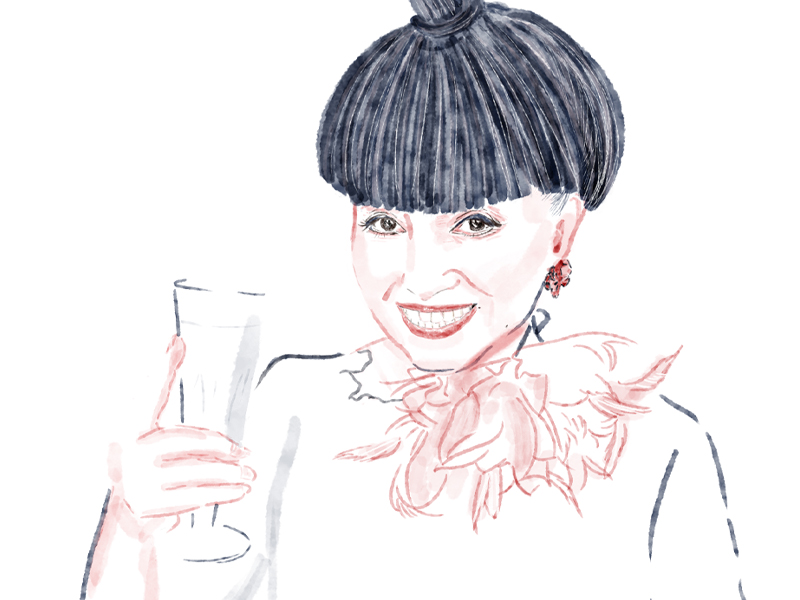
Tetsuko Kuroyanagi
12. TETSUKO KUROYANAGI
The voice of Lady Penelope in the Japanese dubbing of Thunderbirds, Tetsuko Kuroyanagi launched Japan’s first-ever talk show, Tetsuko’s Room, in 1975 and it remains popular today. Her memoir, Totto-Chan: The Little Girl at the Window, became the best-selling book in Japanese history upon release. Known for her charity work, she was the first Asian to be named a Goodwill Ambassador for UNICEF.
11. KIKI KIRIN
A maverick actress whose career spanned more than six decades, Kiki Kirin won critical acclaim for movies such as Sweet Bean and Tokyo Tower: Mom and Me, and Sometimes Dad. She appeared in several Hirokazu Kore-eda movies including Shoplifters, winner of the 2018 Palme d’Or. She could often be seen driving around Shibuya in her old Citroen.
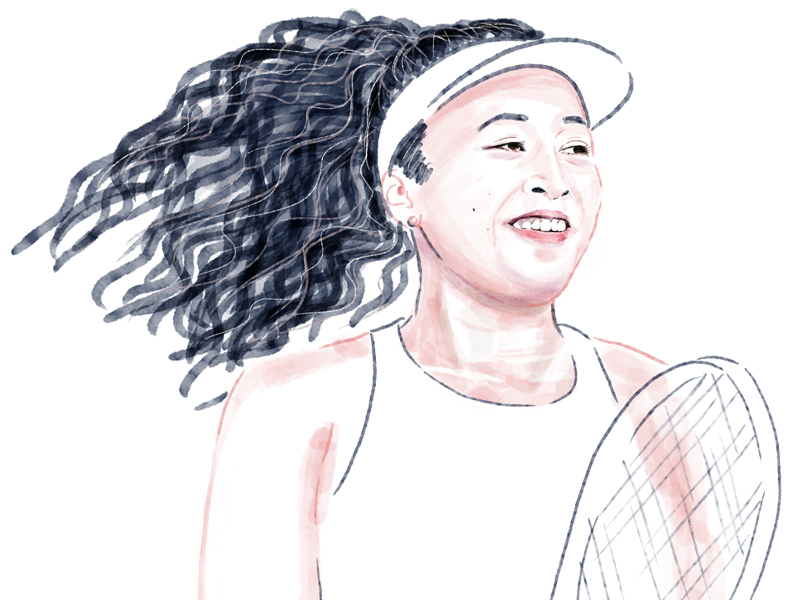
Naomi Osaka
10. NAOMI OSAKA
The youngest name on our list, Naomi Osaka has already won two grand slams despite only being 21. The current US Open and Australian Open champion, she was born in Osaka in 1997 to a Japanese mother and a Haitian father who taught her and her sister to play tennis after watching the Williams sisters compete at the French Open. Osaka moved to America when she was three.
9. YOKO ONO
Born into a semi-aristocratic family (her great-grandfather established Yasuda Bank), Yoko Ono was a former classmate of Prince Akihito. Her third husband, John Lennon, once described her as “the world’s most famous unknown artist.“ Widely blamed for the breakup of The Beatles, public perception of Ono has changed over time.
8. AKIKO YOSANO
A poet and social reformer, Akiko Yosano released her first and most famous volume of tanka (short poems) in 1901. Titled Midaregami (Tangled Hair), the collection of 400 works was panned by literary critics at the time as it was considered too provocative. Well ahead of her time, she depicted women as strong and independent beings, not afraid to act on their sexual desires.
7. ICHIYO HIGUCHI
The face of the current ¥5,000 bill, Ichiyo Higuchi (pseudonym of Natsu Higuchi) was a significant author of the Meiji era whose beautifully written stories focused on female characters. Her most famous book was Takekurabe (Child’s Play), a coming-of-age novella about a group of adolescents living near a licensed red-light district in Tokyo. Higuchi passed away due to tuberculosis aged just 24.
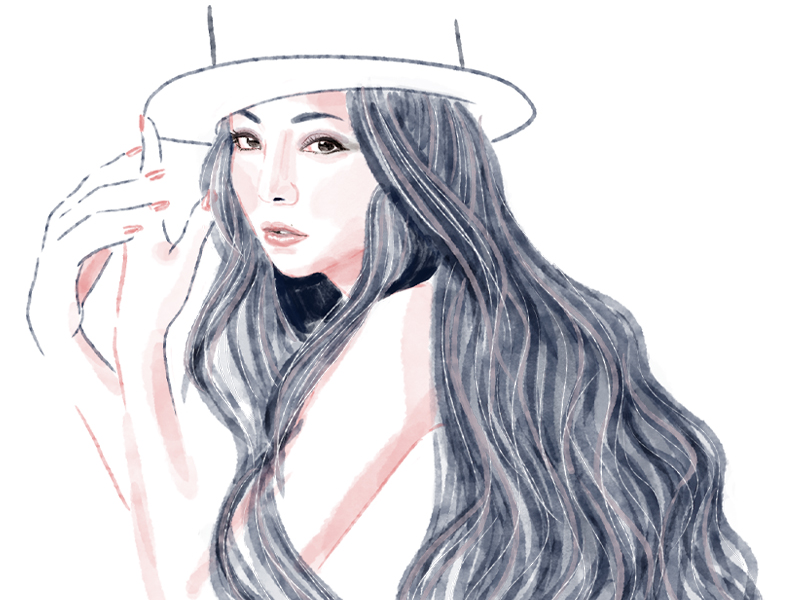
Namie Amuro
6. NAMIE AMURO
The only Japanese artist to reach the million-selling mark in her teens, 20s, 30s and 40s, Namie Amuro amassed 14 number-one singles and sold more than 36 million records. She overcame a huge personal tragedy – in 1999, her mother was murdered by Amuro’s uncle – to become the country’s biggest solo pop star of the past two decades before retiring in 2018.
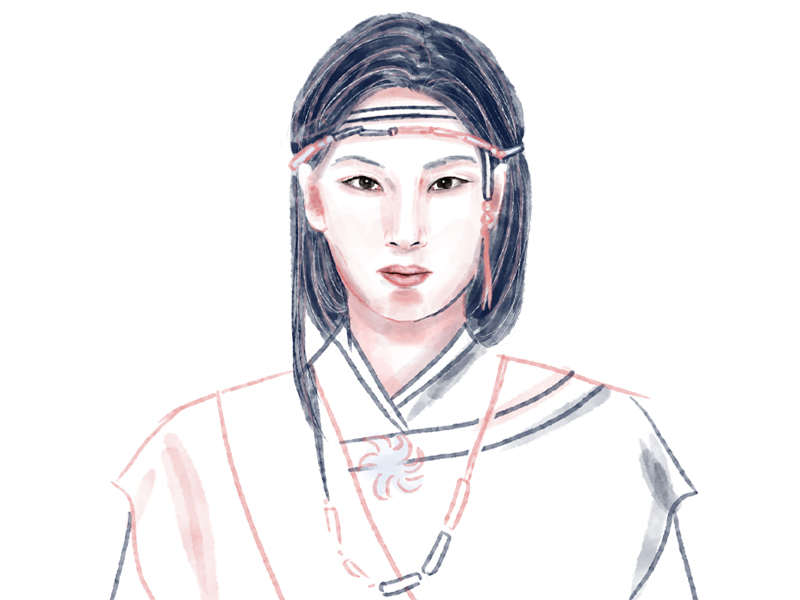
Queen Himiko
5. QUEEN HIMIKO
While Japanese law currently forbids women from ascending to the throne, the country does have a long tradition of female rulers with the most famous being the shamaness-queen Himiko. According to early Chinese dynastic histories, she ruled the Yamatai Kingdom in Wa (Japan) from the end of the second century until her death around 248 AD. “She occupied herself with magic and sorcery, bewitching the people… After she became the ruler, there were few who saw her. She had one thousand women as attendants, but only one man.”
The omission of her name in Japan’s oldest history texts, Kojiki (Records of Ancient Matters) and Nihon Shoki (The Chronicles of Japan), has fuelled endless debate amongst historians. An even more contentious issue is the location of the region she reportedly governed. The so-called “Yamatai Controversy” centers around two destinations: Northern Kyushu and the Kinki region of Northern Honshu.
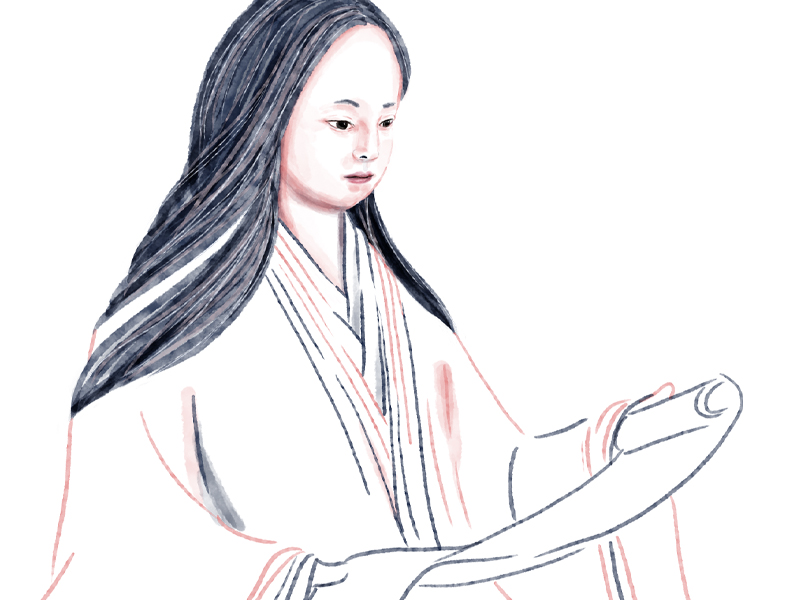
Murasaki Shikibu
4. MURASAKI SHIKIBU
“The Tale of Genji is the highest pinnacle of Japanese literature,” said novelist Yasunari Kawabata during his Nobel Prize acceptance speech in 1968. “Even now, there’s not a piece of fiction to compare with it.” Murasaki Shikibu’s masterpiece is 1,100 pages long and is believed to have taken a decade to complete. Written in the early years of the 11th century, it’s often referred to as the first-ever novel, though that’s long been debated.
A lady-in-waiting at the Imperial Court, Murasaki also wrote The Diary of Lady Murasaki, featuring the oldest known reference to Genji, and Poetic Memoirs, a collection of 128 poems. For her most famous work, she used an archaic court language that was unreadable a century later. Poet Akiko Yosano, the first author to make a modern vernacular translation of Genji, believed Murasaki’s daughter, Daini no Sanmi, wrote the final chapters of the novel.
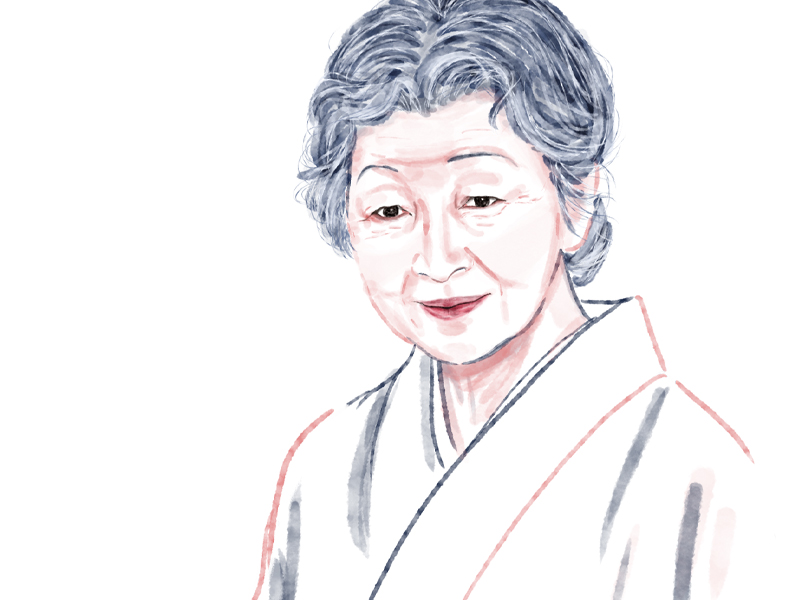
Empress Michiko
3. EMPRESS MICHIKO
Like Sadako Ogata, Michiko Shoda’s alma mater was the University of the Sacred Heart. In August 1957 she met the then Crown Prince Akihito on a tennis court in Nagano. They married eight months later – 500,000 spectators attended the parade while 15 million watched on TV. The media presented the encounter as a real-life fairy tale. As Shoda was a commoner from a Catholic family, some traditionalists opposed the marriage including Akihito’s mother, Empress Kojun. She allegedly drove her daughter-in-law to depression by persistently accusing her of not being a suitable wife.
The vast majority of the public, however, were supportive of the new princess and a so-called “Mitchi boom” spread nationwide. She and her husband were seen as symbols of Japan’s modernization and democratization. They broke tradition by raising their three children instead of leaving their care to palace staff. As emperor and empress, they were held in high regard for prioritizing disaster victims, championing the cause of marginalized people and attempting to reconcile with countries affected by Japan’s colonialism and wartime aggression. Partly educated by Irish nuns, Empress Michiko is a Hibernophile who can play the harp and speak passable Gaelic.
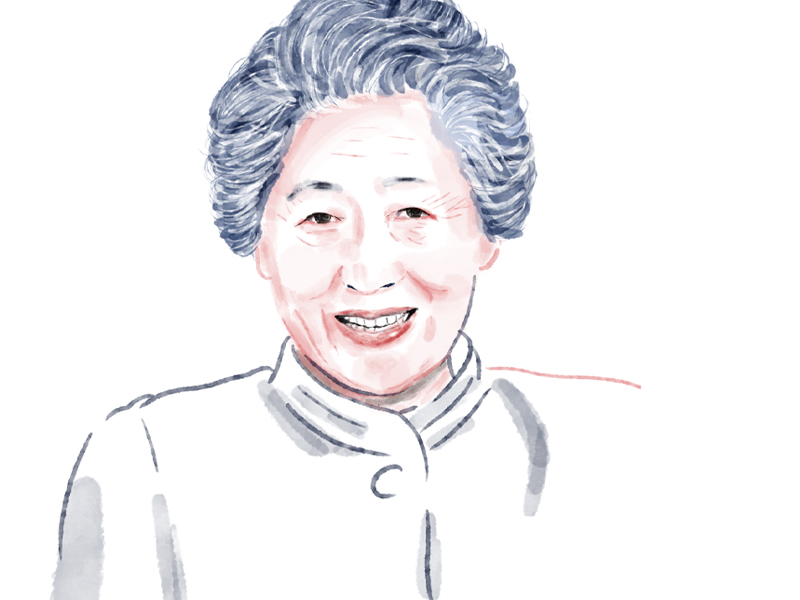
Sadako Ogata
2. SADAKO OGATA
Known as the “diminutive giant” after her defence of displaced Kurdish people in Northern Iraq, Sadako Ogata was appointed the first female UN High Commissioner for Refugees in 1991. Following the collapse of the Soviet Bloc, she had to deal with the worst global refugee crisis since WWII. Appearing on the front line, often in a bulletproof vest, she regularly visited the Balkans and the African Great Lakes region. In 1993, she controversially decided to suspend UNHCR activities in Bosnia after the Bosnian government and Serbian nationalists obstructed deliveries of food and blankets to war victims. Though heavily criticized, she stuck to her guns and five days later the Bosnian government ended its boycott.
Ogata studied English literature at the University of the Sacred Heart before graduating with a Ph.D. in political science from the University of California, Berkeley. Her thesis, “Defiance in Manchuria,” analyzed the reasons behind Japan’s invasion of China. When she was four, her great-grandfather, Prime Minister Tsuyoshi Inukai, was assassinated by junior navy officers in an attempted coup d’etat (they’d also planned to kill the visiting Charlie Chaplin, however he had fortunately changed his plans at the last minute).
AND THE GREATEST JAPANESE WOMAN IS…
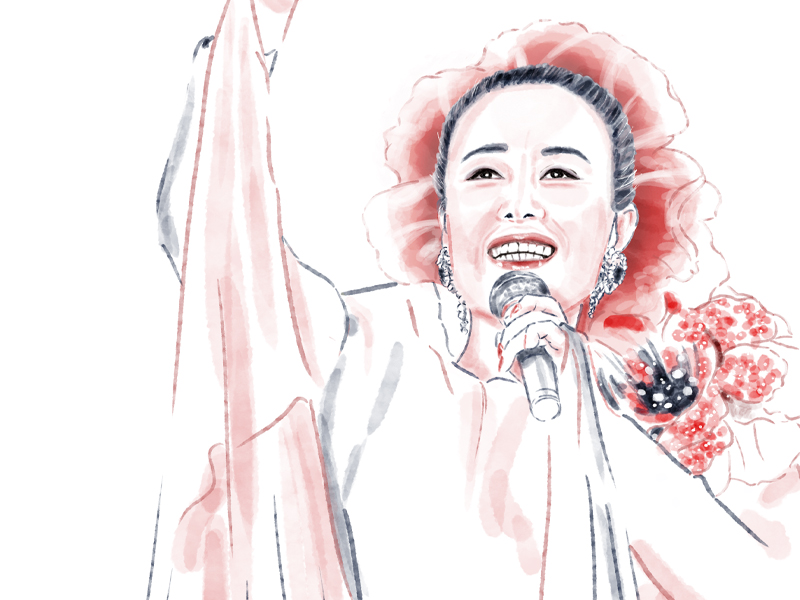
Hibari Misora
1. HIBARI MISORA
The undisputed Queen of Enka, Misora Hibari was a cultural icon and national treasure who helped to lift the spirits of the public after the miseries of WWII. The Shirley Temple of Japan, she appeared in over 160 films and recorded 1,200 songs, selling a reported 68 million records prior to her death in 1989. By 2001 that figure was said to have exceeded 80 million.
The daughter of a fishmonger and homemaker, Hibari was born Kazue Kato on May 29, 1937 in Yokohama. She sang to her father at a war send-off party in 1943 and made her concert hall debut two years later. Changing her name to Misora Hibari (meaning lark in the beautiful sky), she recorded her first record in 1949, the same year she started appearing in movies.
Her reputation grew following performances in Mournful Whistle and Tokyo Kid, two films in which she played an orphan dressed as a boy.
A symbol of the first post-war generation, Hibari became the country’s most successful actress of the 1950s while also turning out hit after hit. In the 1960s, her popularity soared even further thanks to beloved anthems such as the judo-themed track, Yawara, which won the 1964 Japan Record of the Year award, and Kanashii Sake, a heart-wrenching song about someone trying but failing to drink their sorrows away.
By the 1970s Hibari had firmly established herself as the country’s biggest female performer, though this status didn’t stop her from getting into scrapes with NHK and other media outlets. Her brother, Tetsuya Kato, had been arrested for a gang-related crime in 1973 and while Japan’s sole public broadcaster didn’t acknowledge any connection, she was excluded from Kohaku Uta Gassen (the widely watched singing contest on New Year’s Eve) for the first time in 18 years. In protest, she refused to appear on the show for a long period afterward.
In 1988, Hibari became one of the first performers to sing at the newly built Tokyo Dome. It was to be her last-ever concert. She passed away from pneumonia on June 24, 1989, less than half a year after the death of Emperor Hirohito. For many Japanese people, it was a date that marked the true end of the Showa Era. Her influence was that big.
The following month, Hibari became the first woman to receive the People’s Honour Award which was conferred posthumously for giving Japanese people hope and encouragement in the aftermath of such a dark period in the country’s history. Her final single, Kawa no Nagare Yo ni (Like the Flow of the River), released shortly before her death, was voted the greatest Japanese song of all time in an NHK poll taken in 1997. A year earlier, The Three Tenors delighted fans when they performed the track at their concert in Tokyo.
Illustrations by Rose Vittayaset

